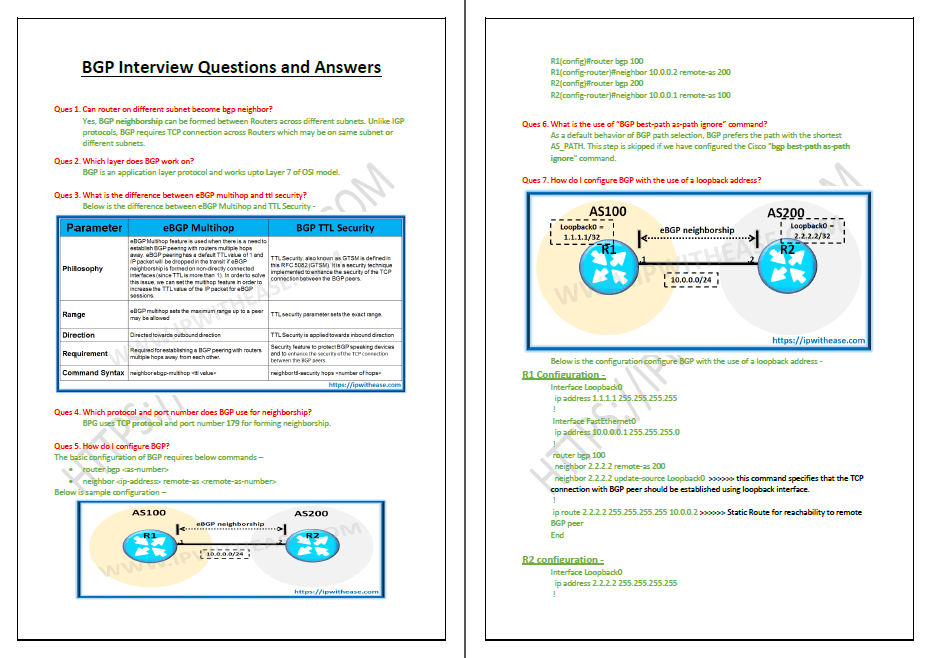BGP Interview Questions and Answers Part 1
23. What Exactly is DUAL?
The acronym DUAL refers to the Diffusing Update Algorithm. EIGRP uses the DUAL to determine the optimal routes to a destination. It allows for classless routing. As a result, subnet mask information will be included in EIGRP routing updates. This enables discontinuous networks and variable-length subnet masks (VLSM).
Exterior Gateway Protocol (EGP) stands for “Exterior Gateway Protocol.” Its one of the protocols for exchanging data between gateway hosts in autonomous systems close to one other.
26. What are the many sorts of self-contained systems?
Autonomous systems may be divided into three categories:
What Are Different BGP Message Types?
Open: Open message is Used to create a neighbor relationship and exchange BGP=parameters, including AS number and authentication values.Keep-alive: These keepalive messages are sent periodically to keep the neighbor relationship. If the Keep-alive messages are not received within a Hold timer then BGP neighbor-ship will be broken down.Update messages: These messages are used to exchanges Path Attributes and the associated prefix /length that use those attributes.Notification: In BGP notifications are used to report BGP problems or errors. It results in a reset of the neighbor relationships.
IBGP works within the single AS and transfer BGP routes within a single autonomous system.
EBGP: BGP running between autonomous systems. By default, eBGP neighbors must be directly connected.
In BGP you are required to manually configure each neighbor in order to establish a neighborhood relationship. There are type of neighbors in BGP:
The type of neighbor has little effect on the setting of neighborhood relations. More significant differences between the different types of neighbors appear in the process of sending BGP updates and adding routes to the routing table. BGP performs these checks when it forms neighborhood relationships:

